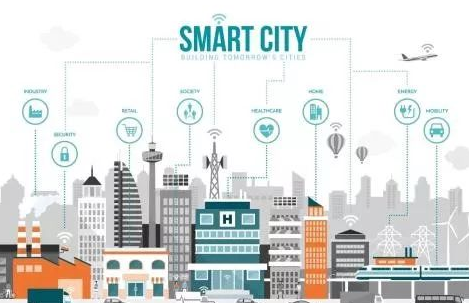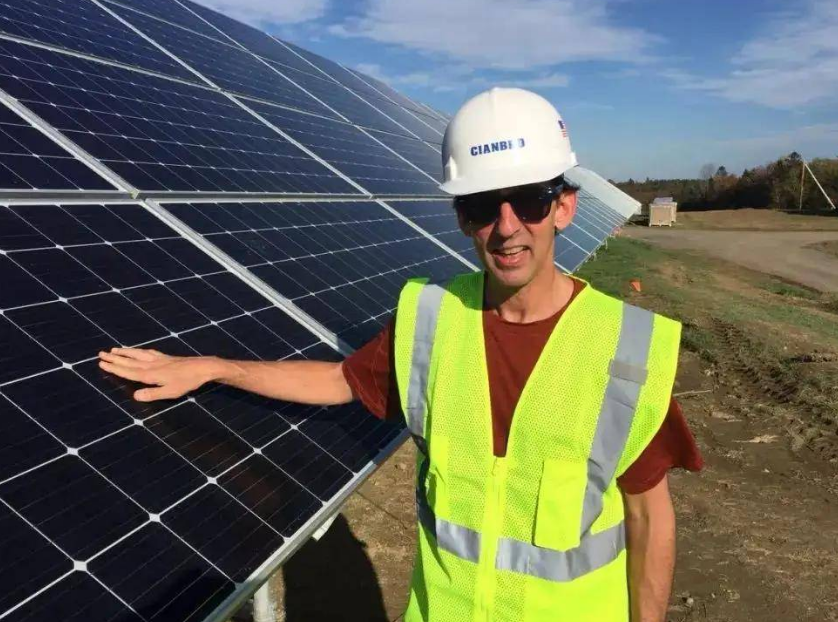We will promote green, low-carbon and circular development of infrastructure
We should firmly establish the concept of green development, take steady and steady reduction of carbon emissions and promote carbon neutrality as the starting point, strengthen the dual control of water resources and the total amount and intensity of carbon emissions, and further promote carbon emission reduction in the infrastructure sector, and contribute to the construction of a green Beijing.
1. Strengthen the rigid constraints of water resources
Implement the requirements of "city determined by water, land determined by water, people determined by water, and production determined by water", implement the strictest water resources management system, regard water resources as the largest rigid constraint, and support the comprehensive construction of a water-saving society.
We will improve the conservation and utilization of water resources. Double control of total and intensity of water use has been implemented, regional and sectoral water use control index systems have been improved, and all-round water conservation in production and daily life has been promoted. During the 14th Five-Year Plan period, the city's total annual water use for production and daily use has been controlled within 3 billion cubic meters, water consumption per unit of regional GDP has been reduced to less than 10 cubic meters per 10,000 yuan, and water resource conservation has reached the world's advanced level. Establish a monitoring network system covering the whole space, the whole chain, and the whole field of water resources utilization, and carry out the construction and management of independent metering areas in depth, so that the water supply network in the central urban area "must know every leak".

We will launch a nationwide campaign to save water. Adhere to the priority of water conservation, water development, promulgation of the Beijing Municipal Water Conservation Regulations, implementation of water-saving action implementation plan, and form a sound legal guarantee system. Improve the water-saving standard system, implement the "100 water-saving standard projects", and establish advanced water consumption quotas covering all fields and water-saving standard systems that meet the basic management and evaluation of water-saving. We will deepen the reform of water prices, innovate market-oriented water-saving systems and mechanisms, and implement a system of progressive price increases for non-residents who exceed their water quotas. Encourage and support water-saving transformation of industrial enterprises and cascade utilization of water circulation in parks, and create water-saving benchmark parks and enterprises. We will strictly manage water use and precipitation in construction, strengthen ecological water metering and charge management, and vigorously promote the application of water-saving technologies such as drip irrigation in landscaping.
2. Optimize the energy consumption structure
With ecological protection and resource conservation as the focus, we will continue to optimize the energy and resource consumption structure in the infrastructure sector, advocate green travel, and lay a solid foundation for achieving stable and stable carbon reduction after peaking.
Promote the "double control" of energy consumption to the "double control" of total carbon emissions and intensity. We will give priority to conservation, deepen industrial restructuring, tap the potential for energy conservation in key areas such as transportation, and increase energy efficiency. We will encourage and guide key energy-using enterprises to make their transformation and upgrading green, intelligent and digital. We will improve the responsibility system for controlling both the total amount and intensity of carbon emissions, and ensure that the reduction of carbon dioxide emissions per unit of GDP meets the national requirements. By 2025, the total carbon dioxide emissions will be the first to peak and then steadily decline.
We will accelerate the adjustment of the energy structure. Vigorously promote "reducing coal, stabilizing gas, reducing oil, strong electricity, and increasing green", and promote the green and low-carbon transformation of energy to achieve new breakthroughs. Increase the construction of clean energy facilities such as electricity in ecological conservation areas, continue to promote the replacement of clean energy from loose coal in remaining villages in rural areas, and basically achieve clean heating for remaining rural loose coal heating users. Accelerate the reduction of coal use in industrial facilities, continue to reduce the total amount of coal, and by 2025, the city will basically not use coal in non-emergency situations. We will rationally guide natural gas consumption to be controlled at around 20 billion cubic meters by 2025. We will vigorously reduce the total amount of vehicle oil products, and guide and encourage the stock of private small buses to "replace oil with electricity". Implement the concept of giving priority to renewable energy, strengthen the application of new energy technologies, vigorously promote the green and low-carbon reform of energy supply and consumption, and gradually realize the replacement of renewable energy by increasing energy consumption.
Advocate green travel methods. Strengthen the green orientation, and guide the public to gradually form a low-carbon lifestyle and consumption concept. The allocation of street space is tilted towards walking and cycling, and the development of road parking Spaces is guided to reduce, and the right of way for walking and cycling is guaranteed. Add green shade and cycling left turn lanes, lights and other facilities to create high-quality walking and cycling space. Comprehensive transportation hub terminals give priority to slow traffic connection organization and space allocation. By 2025, the proportion of green travel in the central urban area will reach 76.5 percent, and the proportion of green travel in Beijing's urban sub-center will reach 80 percent.

Optimize and adjust the transportation structure. We will orderly promote the transformation and upgrading of the railway freight logistics system, and give full play to the role of railways as the backbone of long-distance transport of bulk freight. We will accelerate the construction of freight hubs such as the Beijing-Ping Integrated Logistics Hub, promote the "transit rail" for medium - and long-distance transport of bulk goods, and promote multimodal transport and structural adjustment of transport. Promote the green development of urban freight transport, and continue to implement incentive policies for the operation of new energy trucks. Strengthen the benchmarking role of high-quality enterprises in the freight industry, and promote freight enterprises to accelerate the construction of a new transportation organization model based on new energy. In addition to special situations such as emergency and major event support, vehicles in public areas such as public transport, rental, sanitation and postal services have basically been electrified.
3. Promote resource recycling and efficient use
We will strengthen the circular and efficient use of resources, promote energy conservation and emission reduction in key areas, vigorously develop a circular economy, and continue to improve the efficiency of resource use.
We will strengthen the utilization of sewage resources. Continuous optimization of reclaimed water supply structure, improve the capacity of reclaimed water transmission and distribution. Promote the construction of a water source ring line for the deployment of reclaimed water in a green partition area, ensure the green water supply in large parks such as Wenyu River Park and urban Green Heart Park, strive to use up the reclaimed water in the field of landscaping, and realize the gradual withdrawal of tap water and groundwater irrigation in the field of landscaping. The implementation of key functional areas and key industrial projects of recycled water transmission and distribution projects, ensure the "three cities and one district" and other key functional areas and gas power plants, sanitation incineration plants and other key industrial projects of recycled water supply, and strive to achieve industrial water supply should be full, can be replaced. We will promote the implementation of reclaimed water replenishment projects in rivers and lakes such as Changxing Water source purification, and increase reclaimed water to supplement ecological water use in river channels. Actively promote the local resource utilization of sludge, and promote the harmless treatment of sludge to meet the relevant standards for landscaping and other fields. By 2025, about 370 kilometers of new reclaimed water pipelines will be built, and the utilization rate of recycled water in the city will reach more than 35%, and the local resource utilization level of sludge will be further improved.

We will improve the recycling of solid waste resources. Accelerate the construction of waste materials recycling system, basically complete the system of renewable resources recycling facilities, improve the recycling rate of domestic waste, by 2025, the city's domestic waste recycling rate will reach 37.5%. Strengthen the whole process of construction waste disposal and utilization, optimize the layout of construction waste resource utilization facilities, promote the collaborative construction of decoration waste and construction waste treatment facilities, and promote the utilization of construction waste recycling products. By 2025, to achieve the standardization of decoration garbage collection and transportation, disposal resources. Improve the city's circular economy park system layout.
Enhance the carbon sequestration capacity of landscaping. We will enhance the capacity of forest ecosystems to sequester carbon and release oxygen, continue to carry out afforestation and afforestation, close mountains and forests, enrich biodiversity, improve the quality of forest stands in mountain and plain areas, and comprehensively develop demonstration zones for sequestration and enhancement of forest. Improve the green circulation level of park green space, adjust the planting structure of green space, give priority to water-saving and drought-tolerant native perennial ground cover plants, and reduce water consumption and energy consumption in conservation and management; We will strengthen the use of green energy such as solar and wind energy, promote the recycling of garden waste, and reduce carbon emissions. Use 5G, smart scene application and other technologies to carry out science popularization of garden carbon sink and strengthen public awareness of participation. By 2025, the annual carbon sink of forest land and green space will reach 10 million tons, and an eco-energy-saving and energy-saving landscaping ecosystem will be gradually built.
- EMERSON
- Honeywell
- CTI
- Rolls-Royce
- General Electric
- Woodward
- Yaskawa
- xYCOM
- Motorola
- Siemens
- Rockwell
- ABB
- B&R
- HIMA
- Construction site
- electricity
- Automobile market
- PLC
- DCS
- Motor drivers
- VSD
- Implications
- cement
- CO2
- CEM
- methane
- Artificial intelligence
- Titanic
- Solar energy
- Hydrogen fuel cell
- Hydrogen and fuel cells
- Hydrogen and oxygen fuel cells
- tyre
- Chemical fiber
- dynamo
- corpuscle
- Pulp and paper
- printing
- fossil
- FANUC
- Food and beverage
- Life science
- Sewage treatment
- Personal care
- electricity
- boats
- infrastructure
- Automobile industry
- metallurgy
- Nuclear power generation
- Geothermal power generation
- Water and wastewater
- Infrastructure construction
- Mine hazard
- steel
- papermaking
- Natural gas industry
- Infrastructure construction
- Power and energy
- Rubber and plastic
- Renewable energy
- pharmacy
- mining
- Plastic industry
- Schneider
- Kongsberg
- NI
- Wind energy
- International petroleum
- International new energy network
- gas
- WATLOW
- ProSoft
- SEW
- wind
- ADVANCED
- Reliance
- YOKOGAWA
- TRICONEX
- FOXBORO
- METSO
- MAN
- Advantest
- ADVANCED
- ALSTOM
- Control Wave
- AB
- AMAT
- STUDER
- KONGSBERG
- MOTOROLA
- DANAHER MOTION
- Bently
- Galil
- EATON
- MOLEX
- Triconex
- DEIF
- B&W
- ZYGO
- Aerotech
- DANFOSS
- KOLLMORGEN
- Beijer
- Endress+Hauser
- MOOG
- KB
- Moxa
- Rexroth
- YAMAHA
- Johnson
- Westinghouse
- WAGO
- TOSHIBA
- TEKTRONIX


Email:wang@kongjiangauto.com



































































































































